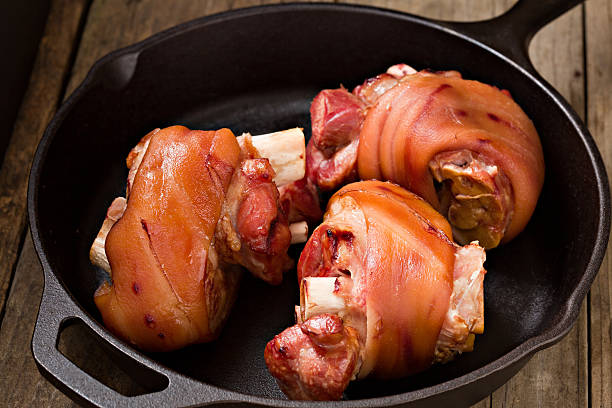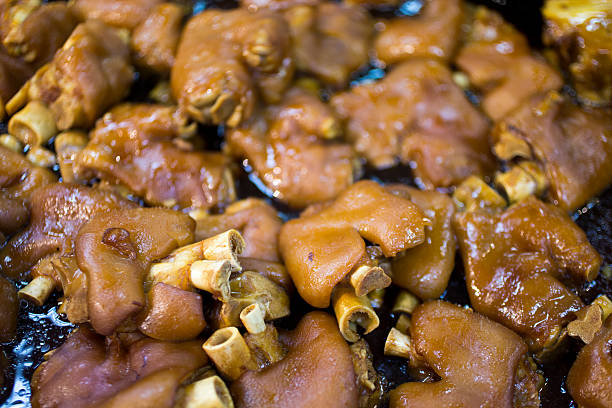Embarking on the culinary journey of cooking smoked ham hocks is akin to unlocking a treasure trove of rich flavors and tender textures that have been celebrated in cuisines around the globe. Whether you’re a seasoned chef or a curious home cook, mastering the art of preparing this delectable cut can elevate your cooking to new heights. In this comprehensive guide, we delve deep into the world of smoked ham hocks, offering expert insights and tried-and-true methods to ensure you achieve succulent results every time.
Smoked ham hocks, with their deep, smoky undertones and robust meatiness, serve as the cornerstone for countless traditional dishes, from soul-warming soups and stews to hearty beans and greens. Their versatility and ability to impart complex flavors make them an indispensable ingredient in the culinary repertoire. However, the secret to unlocking their full potential lies in understanding the nuances of cooking them to perfection.
This article is crafted to demystify the process of how to cook smoked ham hocks, providing you with the knowledge and techniques needed to confidently tackle this ingredient. Through step-by-step instructions, tips from culinary experts, and insights into flavor pairings and recipe ideas, we aim to not only guide you through the cooking process but also inspire you to explore the myriad ways smoked ham hocks can enhance your meals.
Whether you’re looking to recreate a cherished family recipe or experiment with new flavors and dishes, this guide is your gateway to achieving mouthwatering results that will impress your guests and satisfy your culinary curiosity. So, let’s embark on this flavorful journey together, exploring the art and science of cooking smoked ham hocks, and discover the secrets to making these humble cuts the star of your next meal.
What Are Ham Hocks?

Ham hocks, also known as pork knuckles or shanks, are cuts of meat that come from the lower part of the pig’s leg. They are typically cured and smoked to add flavor and preserve them for longer periods of time. This process gives ham hocks a distinct smoky taste and tender texture.
Nutritional Profile
While ham hocks are not the leanest cut of pork, they can be an excellent source of protein, vitamins, and minerals when enjoyed in moderation. A 3-ounce serving contains:
- Calories: around 153
- Fat: 9 grams
- Protein: 15 grams
- Iron: 10% Daily Value
- Potassium: 5% Daily Value
- Zinc: 15% Daily Value
When braised or stewed, the collagen-rich ham hocks break down into gelatin, which contains the amino acids glycine and proline. These compounds may provide digestive and anti-inflammatory benefits. Overall, ham hocks offer a nutritious boost to soups, beans, greens, and more when consumed as part of a balanced diet.
Braising for Deep, Rich Flavor
Braising is the best technique for cooking ham hocks to maximize their flavor and tenderness. Here is an overview of the simple process:
- Ingredients: Ham hocks, liquid like water or broth, aromatic vegetables, seasonings.
- Browning: Pat hocks dry and brown in batches in a hot pan to develop flavor.
- Simmering: Place hocks in a pot with enough liquid to cover. Add veggies and spices. Simmer partially covered for 1-3 hours.
- Serving: Ham hocks are fully cooked once the meat is pull-apart tender.
Slow braising condenses the juices into a rich glaze while effectively softening the meat and connective tissues. The result is succulent, fall-off-the-bone ham hocks with melt-in-your-mouth texture.
Basic Braised Ham Hocks Recipe
This straightforward recipe walks through the simple steps for delivering fork-tender smoked ham hocks.
Ingredients:
- 3 lbs smoked ham hocks
- 1 onion, chopped
- 3 carrots, chopped
- 3 celery stalks, chopped
- 6 cups chicken or ham broth
- 2 bay leaves
- 1 teaspoon black peppercorns
- Salt and pepper to taste
Instructions:
- Pat ham hocks dry with paper towels. Season with salt and pepper.
- Heat oil in a large pot or Dutch oven over medium-high heat. Working in batches, add hocks and brown for 2-3 minutes per side. Transfer to a plate.
- Reduce heat to medium. Add aromatics and cook for 5 minutes until softened.
- Return ham hocks and any juices to pot. Add broth, bay leaves and peppercorns. Bring to a boil.
- Reduce heat, cover and simmer for 1 1/2 – 3 hours until very tender.
- Transfer hocks to a plate. Remove bay leaves.
- Using two forks, shred meat from bones. Discard bones, fat and skin.
- Return shredded meat to cooking liquid. Season with salt and pepper to taste.
- Serve ham hocks braised or over grits, rice, or biscuits.
Notes:
- Smaller 1-2 lb ham hocks may only need 1 – 1 1/2 hours. Larger 3-4 lb hocks can take 2 1/2 – 3 hours.
- For added richness, stir in 1/4 cup heavy cream at the end.
- Garnish with fresh parsley, green onions, or hot sauce.
Flavoring and Serving Suggestions
Beyond the basic preparation, there are many possibilities for customizing braised ham hocks:
- For more spice, add crushed red pepper, black pepper, paprika, or cayenne.
- Use beer, apple cider, or wine instead of plain broth for extra flavor.
- Toss in a smoked ham hock while making beans, soups, or chilis for a flavor boost.
- Mix pulled ham hock meat into macaroni and cheese, eggs, or fried rice.
- Serve over steamed collard greens, roasted potatoes, or creamy grits for a hearty meal.
- Use ham broth to cook rice, make soup stock, or braise greens.
Don’t be afraid to get creative with ingredients like spices, acids, sweeteners, and mix-ins to complement the distinct smoky essence of the ham hocks.
Storage Tips
Proper storage preserves freshness and prevents waste.
- Raw ham hocks can be refrigerated for up to 4 days or frozen for 4-6 months.
- Cooked ham hocks will keep refrigerated for 3-4 days or can be frozen for 2-3 months.
- Allow frozen cooked ham hocks to thaw overnight in the refrigerator before using.
- Reheat thawed cooked ham hocks gently on the stovetop or in the microwave.
Food Safety
Always use a food thermometer to ensure ham hocks reach a safe internal temperature of at least 160°F before serving. Reheat cooked ham hocks to 165°F. Be sure to wash hands and prep surfaces before and after handling raw pork. Refrigerate leftovers within 2 hours. When in doubt, throw it out.
More Uses for Ham Hocks

Leftover fully-cooked ham hocks can be used in all kinds of dishes:
- Pull, chop, and pile on biscuits or sandwiches
- Dice and add to salads, omelets, or scrambles
- Shred and incorporate into casseroles or pasta dishes
- Chop and mix with barbecue sauce for sliders or pizza topping
With a little creativity, you can get multiple meals out of a batch of ham hocks while reducing food waste.
Conclusion
From their concentration of collagen to their smoky, savory flavor, ham hocks are an underrated gem. Low in cost but high in taste, they excel at adding richness to soups, stews, beans, grains, and more. With proper braising and seasoning, ham hocks reveal their tender, succulent potential. Follow this guide to unlock the full culinary possibilities of ham hocks, from prepping to storage to serving. Soon you’ll be craving these economical yet mouthwatering morsels. Get ready to enjoy ham hocks in a whole new way.
